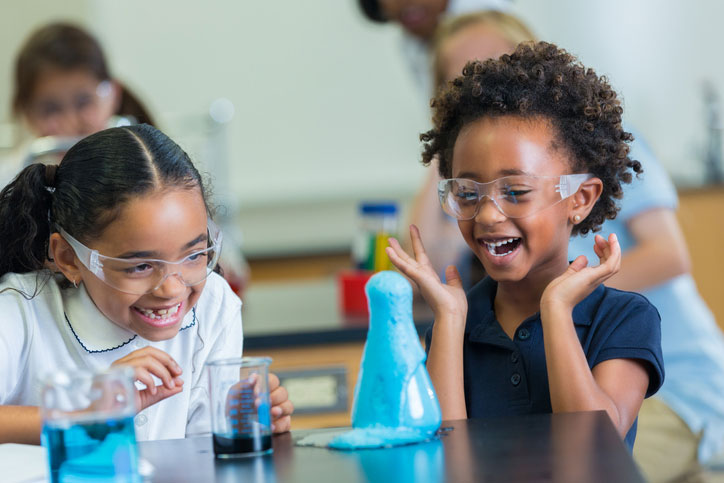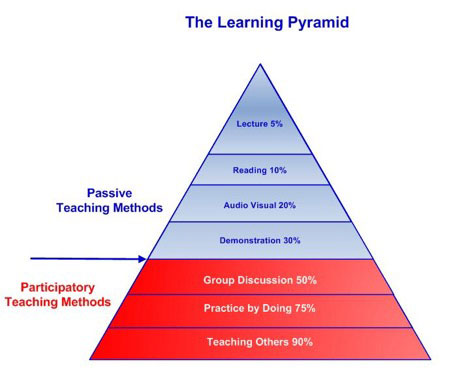7 Steps for Putting the “PH” Back in PHUN in Your Classroom
8/27/2019

Part 2 of 5 … Join us in the second installment of a five-part series that tells the story of how one dedicated principal observed positive change in the classroom when teachers incorporated the principles and philosophy from the popular book, The Wild Card by Hope and Wade King.
7 Reasons Why substantiates the need to change up our ordinary teaching and mundane routines. Let's set the stage and contrast two classrooms that are teaching 5th grade American History and the events leading up to the Boston Massacre.
Scenario 1
Setting: Classroom with chairs and desks in row; teacher's desk is in the front of the room; lots of Boston Massacre notes on the white board; the teacher is reading from her notes.
Teacher: Jon, make sure you are writing down all the notes from the board into your notebook. The test questions are created with these notes.
Jon: Can you just give me the notes or can I take a picture of the notes?
Teacher: No, just write them down as I read them to you.
Jon: Can I just read the book?
Teacher: No, I am teaching you the important information from the book. Today's topics are in your book. You can read the book, too.
Jon: Can I just sit here or are the notes for a grade?
Teacher: The notes are not for a grade, but the content will be on the test. You should probably write them down if you want a good grade.
Jon: I actually learn better just reading.
Scenario 2
Setting: Classroom with tables and flexible seating; teacher's desk is in the back corner; many visual and 3-dimensional models, graphic organizers, anchor charts; Chromebooks on tables; the teacher is listening as students present and defend their thinking
Jon: I believe the British did not have the right to sleep or be fed in the colonists' houses. The right to quarter troops had to be illegal.
Teacher: What information leads you to believe this?
Jon: I researched several web sites, one being www.history.com, which states that the colonists were upset with the British troops, especially in Boston. This led to the Boston Massacre.
Teacher: Who else has evidence to back up or refute Jon's viewpoint?
Jon: I learn best when I use the Chromebook to research.
Obviously, two different ways to teach students. Which one is better? That is up for debate. If students and the teacher were polled, I would bet they'd say the latter example is much more engaging and fun, not only for the students, but also for the teacher. Which one is easier to execute…the first scenario? Which scenario has higher chances of retention…I would put my money on the second scenario?
Did you notice in the title that I purposely spelled "fun" with a PH? There is more than one way to spell it if you're creative and willing to think outside the box…much like the excitement, creativity, and fun in your classroom. In the next two installments in this series, I will give you several ideas and strategies to overhaul your classroom instruction. Here are seven reasons to bring back the PHUN in your classroom.
1 - Identify Stale Curriculum
Teaching to standards, planning lessons with the same "Madeline Hunter" format, and assessing what you have taught can become very commonplace. For a majority of us, when we plan we use the mandated district curriculum and go from page to page meeting the expectations for pacing. We look to finish the textbooks or cover as much content as possible. We may even connect this textbook teaching to state standards, and there may even be some exciting lessons.
We need to champion a greater variation of learning experiences.
We need to break away from our ordinary lesson planning, with administrative approval, and create learning experiences that students will remember. Experiential learning with a high level of engagement connected to the standards, and even connected to the textbook, can be powerful. The following series of articles will give you more ideas and invigorate your lesson planning and teaching.
2 - Consider Alternatives to Unengaging Instruction
"Sit and get" professional development is not very effective for teachers. Not surprisingly, the same holds true for our students in the classrooms. In fact, lecture style teaching is less than 5% effective according to The Learning Pyramid.

Since we know this as adults as we sit through lectures, why can't we change this for our students? We must break away from our conventional teaching practices. We need to understand that although lecture and regurgitation may seem the easiest, it is not the most effective strategy when it comes to teaching.
The following steps will give you more ideas!
3 - Get Students' Attention
Changing up what we do to get students' attention can be fun not only for students, but for us too. As we compete for their attention, we can change our teaching practices to increase engagement. Many educators are fighting student's screen time and gaming, such as Fortnite.
As educators, we can continue to make this a battle, but it's not one we're likely to win. The gaming industry has much more time, energy, and money to create new ways of engaging our students. Instead of going to battle with them, in some ways it's smarter to join them. We must create learning experiences that grab the attention of our students and help them learn the content, even when they do not know they are learning. This may seem like trickery, but in actuality, it is great instruction. Having students engaged in learning actually helps us go deeper into the content, something that helps increase retention for students.
"As educators, if we continue to make this a battle, we will not win... We must create learning experiences that grab the attention of our students and help them learn the content even when they do not know they are learning."
4 - Identify Low Engagement Instruction and Increase Engagement
Engagement can come in many different forms, but low engagement instruction is also easy to spot. This is when students sit, do not interact with anyone or any materials, but are still expected to learn. We can add in learning structures, project-based learning, experiential learning, and other ideas to increase students' active participation. This can be exciting and fun for both students and teachers.
Empowering students through increased engagement may seem like teachers are giving up control of their classrooms, but if done correctly, the empowerment will lead to higher academic retention.
5 - Increase Creativity and Innovation
The ability to take a risk, be creative, and even innovative, are stymied for many different reasons…sometimes self-imposed, and sometimes imposed by others. We may turn the next page in our textbook, or teach in the same format every lesson, and not even realize that our students are not as engaged as they could be. Unfortunately, we do not know what we have never experience before. We must be able to step out of our comfort zone, do some self-reflection, and try something new.
Working with the principal and getting the "license" to change instruction drastically can be exciting and invigorating, which is exactly what many of us need to shake things up in the classroom.
"We must be able to step out of our comfort zone, do some self-reflection, and try something new."
6 - Increase Retention
When we make learning experiences more exciting and engaging, students are more likely to retain the information. When students can actually experience a learning event visual, auditory, kinesthetic, or tactile means, it engages more neurons in their brains for learning. Research shows that we can retain more information from the content presented to us when we experience learning in multiple modalities.

7 - Make Memories
Students remember experiences and the relationships they had with teachers more so than what was on page 150 of the social studies textbook. When we create memorable experiences, we are connecting students to content at a much higher level.
As I think back to my favorite teachers, many teachers come to my mind…not so much what they taught, but how they treated me. When I concentrate on the content I was taught in school, experiential learning is the most prominent: 1) making a World War II Airplane out of balsa wood in fifth grade, 2) playing my drum in music class in sixth grade, 3) cooking a dish in home economics my junior year, 4) doing an explorers simulation in social studies in fifth grade, and 5) eating at a long table for Thanksgiving dinner in first grade. All these experiences increased my retention in a given content area, involved multiple modalities, and made them memorable.
We sometimes do what is easiest and teach straight from our textbooks. Unfortunately, the amount of memories I have from textbooks is minimal. In fact, one of the only textbooks I remember was from a social studies class… because it was so outdated. I remember facts about countries, people, and perceptions that had changed from the circa 1980s textbook I used in high school (I was in high school in the early 1990s). It was amazing to see what was in print a decade before, and how it had changed so much. It was memorable how my teacher used the textbook to teach "change". Other than that, I do not remember many other pieces of content taught from a textbook.
Understanding this concept of relationships driving instruction, we as teachers must create experiences that are memorable and support our students in transitioning the content knowledge into long-term memories.
Continue reading... find the third installment of Jon Konen's 5-part Wild Card Series here.
- Learning How to Say No and Set Boundaries with Parents - November 21, 2022
- If You Had Only One Behavior Strategy to Use in Your Classroom, What Would It Be? - September 26, 2022
- Live Your Code: 7 Strategies That Will Help You Be the Most Effective Educator You Can Be - August 15, 2022











